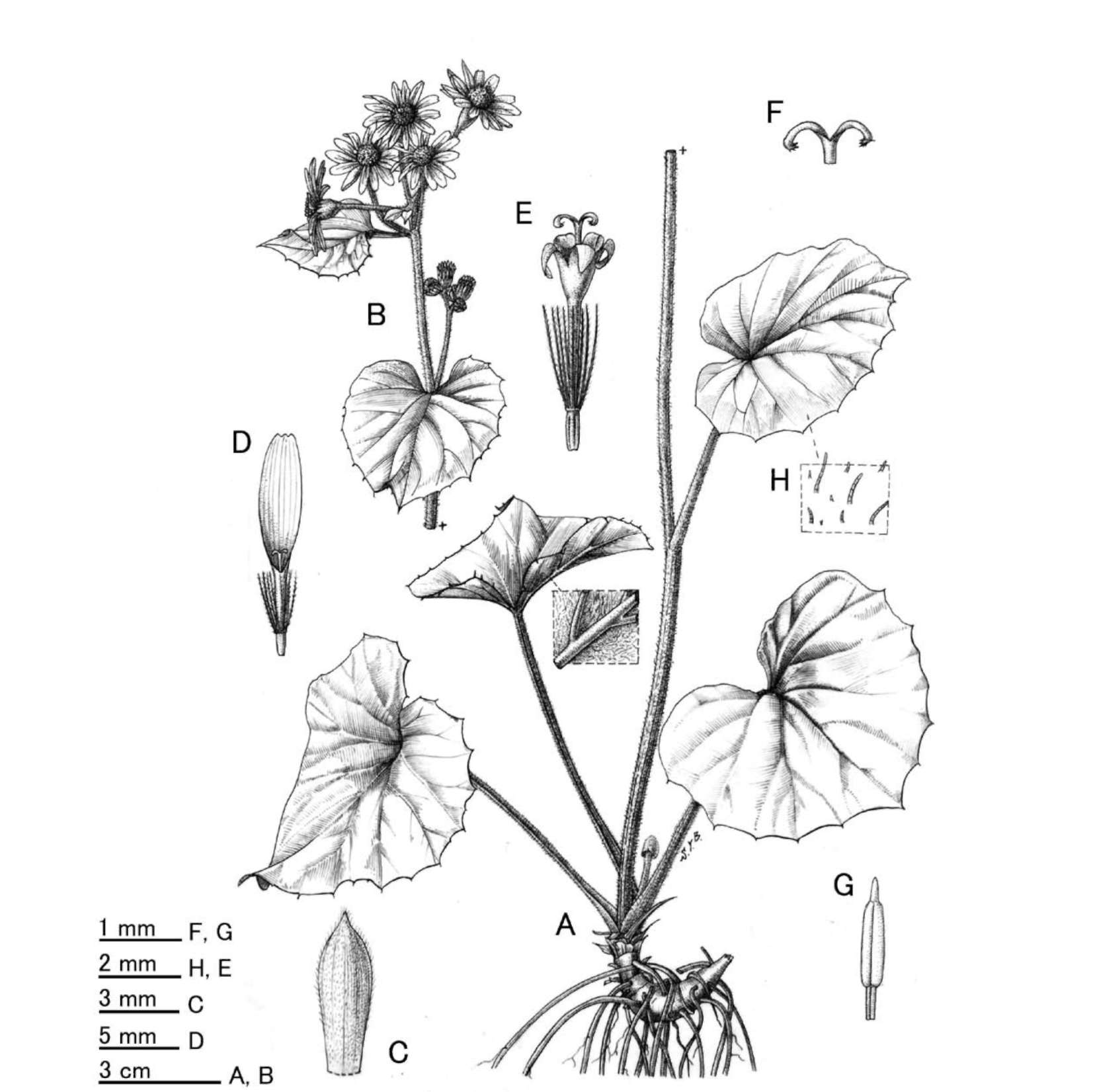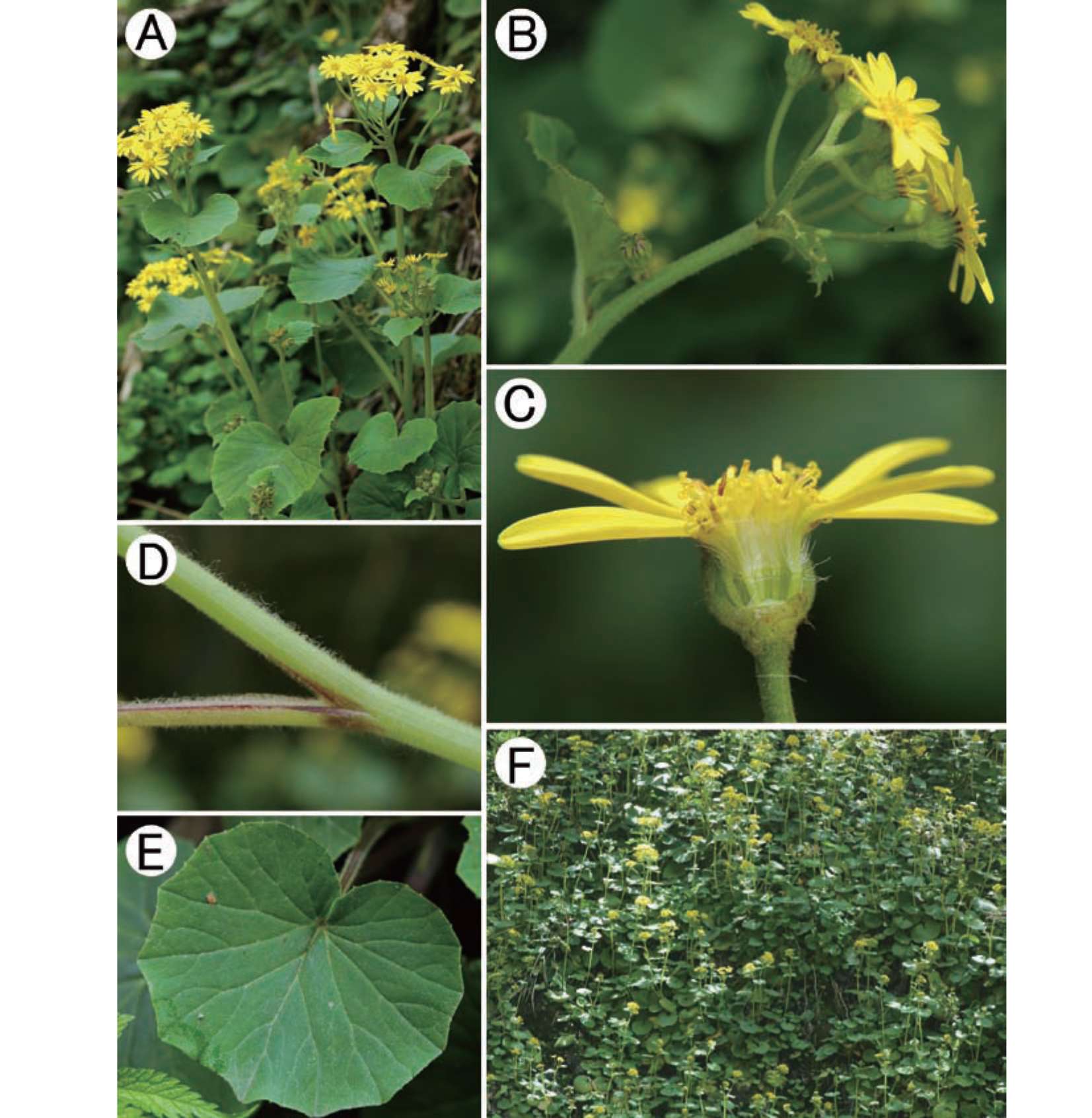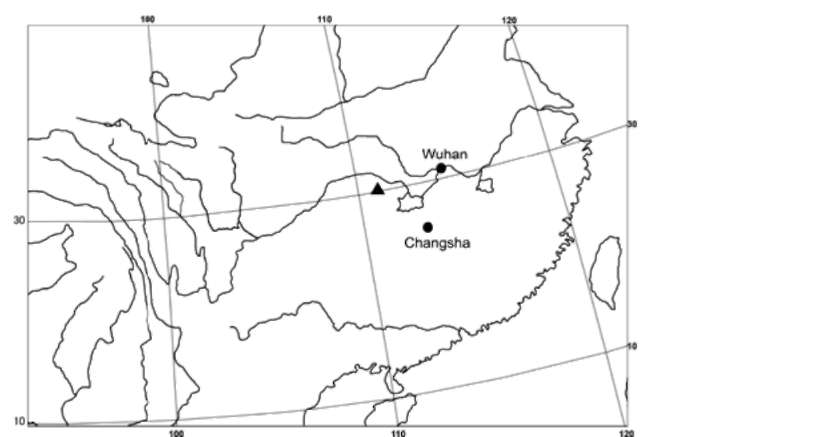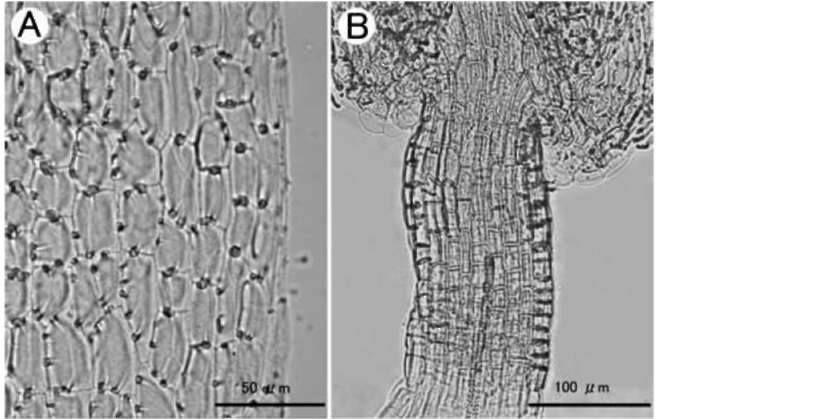ligulis 6-7-nerviis, acheniis laevibus pappis praeditis, ab illo foliorum laminis reniformibus vel orbiculari-reniformibus, margine indistinctissime repandis, ab hoc foliorum laminis margine tantum indistinctissime repandis, supra pubescentibus, petiolis tantum basi dilatatis, haud auriculatis, ab ambobus planta breviore, 16-60 cm alta
differt.
Description. Rhizomatous herb with leafy stems, stolons absent. Rhizomes ca. 10 mm in diameter. Stems solitary, erect, 16-60 cm tall, simple, pubescent. Radical leaves long-petiolate; lamina undivided, reniform to orbicular-reniform, 4.5-12 x 5-13 cm, palmately veined, apex obtuse to acute, base shallowly to deeply cordate, margin very indistinctly repand and denticulate, green above and pale-green beneath, pubescent above, sparsely villous or sometimes glabrescent beneath; petioles 5-20 cm long, pubescent, base expanded, not auriculate. Upper stem leaves smaller, with shorter petioles. Capitula many in apical compound corymbs; peduncles 1-4 cm long, pubescent or sometimes sparsely to densely villous. Involucres campanulate, ecalyculate, 6-8 x 6-7 mm. Phyllaries 10-14, uniseriate, oblong-lanceolate to oblong-oblanceolate, 5-7 x 1.5-2 mm, apex acuminate or acute, pubescent, fimbriate-ciliate at the apex, herbaceous, green. Ray florets ca. 13; corolla tube 3 mm long, glabrous; rays yellow, oblong-elliptic, 10-14 x 2.5-4 mm, apically 3-denticulate, 6-7-veined. Disc florets many; corolla 5 mm long, tube 4 mm long, limb campanulate; lobes ovate-lanceolate. Anthers ca. 1.5 mm long, base obtuse, appendages ovate-oblong. Style arms ca. 0.8 mm long, apex truncate. Achenes cylindrical, 1-1.5 mm long, smooth, glabrous. Pappus white, ca. 3 mm long.
Additional specimens examined. CHINA. Hunan, Shimen County, southern slope of the Hupingshan Mountain, Yuantouhe River, Shi-gun-tang, alt. 1,290 m,
3 May 2006, Hupingshan Exped. P-010 (JIU); Shimen
County, southern slope of the Hupingshan Mountain, Da-huang-lian-ping, alt. 1,400 m, 17 May 2000, L. H. Liu & G. W. Hu 19657 [Herbarium of Hunan Normal University (HNNU)] ; Shimen County, southern slope of the Hupingshan Mountain, west of Da-huang-lian-ping, 1,550 m, 21 Apr 1984, L. H. Liu 18389 (HNNU). Hubei, Wufeng County, northern slope of the Hupingshan Mountain, alt. 1,476 m, 29 Apr 2008, Hupingshan Exped. 080429030
(JIU).
Etymology. The specific epithet chupingshanensis^ is derived from the type locality, the Hupingshan Mountain, Shimen County, Hunan Province, China.
Phenology. Flowering from April to May; fruiting from May to June.
Distribution and habitat. Sinosenecio hupingshanensis is currently known from four populations in the Hupingshan Natural Reserve, one on the northern slope within Hubei Province and the other three on the southern slope within Hunan Province, China (Figure 3), growing in shady places along the margin of mixed evergreen and deciduous broad-leaved forests at altitudes between 1,000-





